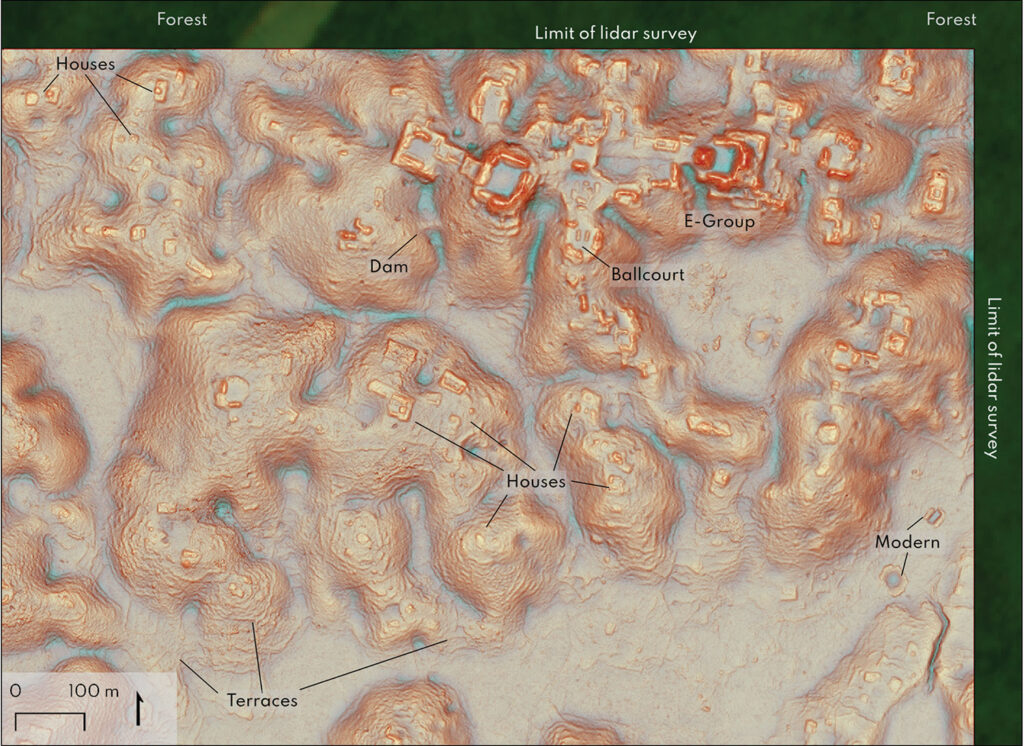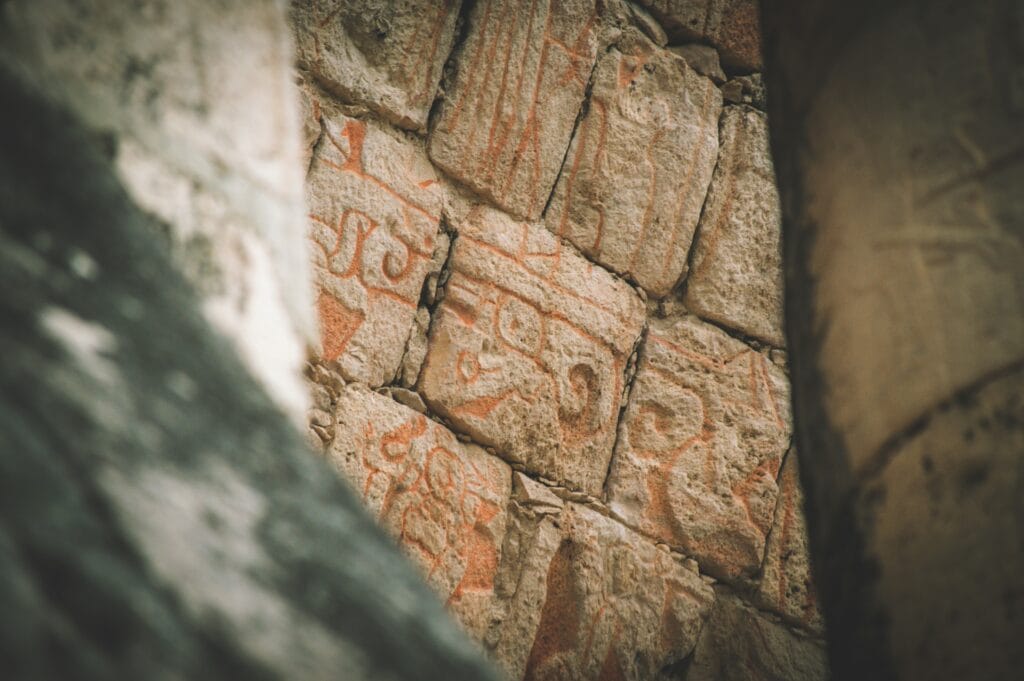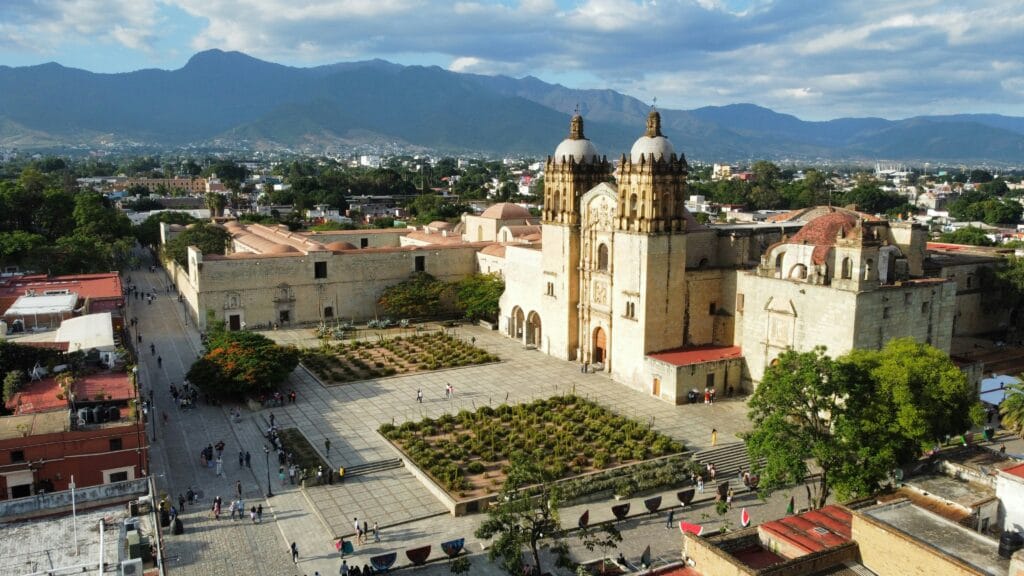Mexico is renowned globally for its vibrant culture, stunning coastlines, and luxurious resorts. However, for the discerning traveler, the true essence of Mexico lies beyond the well-trodden paths, in the thrill of uncovering ancient mysteries and experiencing the country’s profound historical tapestry firsthand. This spirit of adventure, of venturing beyond the typical resort scene, is precisely what defines the “Meanwhile In Mexico” ethos. The recent discovery of Valeriana, a monumental Mayan metropolis hidden deep within the Yucatan jungle, perfectly embodies this call to explore the exciting, less-charted wonders of Mexico. This newly unveiled site stands as a powerful testament to the enduring ancient civilizations that shaped this land, inspiring a deeper form of exploration that resonates with the adventurous soul.
The Jungle’s Secret: How Valeriana Emerged from the Shadows
The story of Valeriana’s emergence from centuries of obscurity is as captivating as the ruins themselves. Its discovery, announced in October 2024, was not the result of a meticulously planned archaeological expedition but rather an accidental breakthrough facilitated by modern technology. Luke Auld-Thomas, a PhD student at Tulane University, stumbled upon the site while analyzing pre-existing LiDAR data.1 This data, originally collected for environmental monitoring, had nothing to do with archaeology, underscoring the unexpected nature of groundbreaking discoveries that continue to reshape our understanding of ancient civilizations.1
The pivotal role in Valeriana’s revelation belongs to Light Detection and Ranging, or LiDAR, technology. This revolutionary aerial mapping technique employs laser pulses sent from a sensor to measure the distance between the sensor and the ground, effectively creating detailed 3D maps of the terrain.1 Crucially, LiDAR can “see through” the dense jungle canopy that has kept ancient cities hidden for centuries, revealing the underlying structures that traditional ground surveys would miss.1 The application of this technology has profoundly transformed archaeological discovery. The fact that a student, by processing data found online, could make such a monumental discovery indicates that the tools and data for archaeological breakthroughs are becoming increasingly accessible, extending beyond established, large-scale research teams. This accessibility opens new avenues for a broader range of researchers to contribute to the field. Furthermore, the efficiency of LiDAR is staggering; Professor Marcello Canuto, a co-author on the Valeriana study, notes that in the past decade, LiDAR has mapped approximately ten times the area that archaeologists managed in about a century of traditional work in the Mesoamerican region.3 This dramatic acceleration in the rate of discovery means that archaeologists are now identifying so many sites that they cannot hope to excavate them all.3 This abundance fundamentally changes the focus from merely finding sites to strategically prioritizing which ones to investigate, while simultaneously expanding our understanding of the true scale of ancient civilizations, as countless more “lost” cities are now known to exist, concealed beneath the verdant jungle.

Valeriana Revealed: A City of Grandeur and Mystery
The sheer scale of Valeriana hints at a once-thriving metropolis. The site covers an impressive area of approximately 120 square kilometers (47 sq mi).4 Within this vast expanse, researchers have identified an astonishing number of structures—more than 6,500 4, with some reports indicating up to 6,764 buildings of various sizes.3 This density of construction points to an exceptionally vast and complex urban center.
Valeriana exhibits all the hallmarks of a major Mayan political capital. Its architectural features include large stone pyramids, reminiscent of those found at the most famous Mayan ruins, along with multiple plazas, a dedicated ballgame court, and an engineered dammed reservoir.1 The presence of these sophisticated elements strongly suggests that Valeriana served as a crucial administrative and religious hub, and very likely a center for trade, within the ancient Maya world.1
The city’s historical timeline spans centuries, with architectural features known as an “E-Group assemblage” indicating its founding date as early as 150 AD, during the Late Preclassic period.4 Valeriana most likely flourished during the Classic period of Maya civilization, from approximately 250 to 900 AD.4 Its peak population, estimated to be between 30,000 and 50,000 people from 750 to 850 AD, highlights its prominence.2 The density of building clusters at Valeriana is considered second only to Calakmul, one of the largest and most spectacular known Maya sites, located about 100 kilometers away.3 This comparison underscores Valeriana’s significance in the ancient Maya landscape.
The urban layout and the sheer density of building clusters at Valeriana suggest a highly diverse and organized society. Researchers believe that its residents regularly interacted with their rural neighbors, painting a picture of a sophisticated and interconnected ancient world.4 The monumental scale of Valeriana, with its vast population and extensive urban planning, including critical infrastructure like a dammed reservoir, challenges older Western assumptions that tropical regions were inherently unsuitable for large, complex, and densely populated civilizations—ideas that suggested such environments were where “civilizations went to die”.3 This discovery, alongside other recent LiDAR-aided finds like Ocomtún and Chaltun Ha 5, compels archaeologists to revise their understanding of Maya population density and urban sprawl in the lowlands. It suggests a far more interconnected and densely populated landscape than previously imagined, emphasizing the advanced engineering and resource management capabilities required to sustain such large populations in a challenging jungle environment. Furthermore, the research team, including Luke Auld-Thomas, has posited that the very high population density of Maya cities like Valeriana might have contributed to their eventual decline. This density could have made the civilization less flexible and more vulnerable to environmental stressors, such as drought conditions, leading to the unraveling of the entire system as people were forced to relocate.3 This perspective offers a more nuanced understanding of the factors contributing to the decline of the Maya civilization, linking dense urbanism directly to environmental resilience.
Hidden in Plain Sight: The Site’s Current Status and Future
While the discovery of Valeriana has ignited immense excitement, it is crucial for eager explorers to understand that the site is currently not open to the public.1 Archaeologists are still in the preliminary stages of fieldwork and research, meticulously studying and documenting the newly revealed structures.4 This meticulous process is essential for understanding and preserving the site’s historical integrity.
Despite its centuries-long concealment, the ruins of Valeriana are surprisingly “hidden in plain sight.” They are located only a 15-minute walk from Federal Highway 186, near the town of Xpujil and cultivated farmland.3 This unexpected proximity to modern infrastructure, while reinforcing the theme of unseen wonders, also presents unique challenges and opportunities for its future.
Researchers are committed to further fieldwork at Valeriana 4, but the conservation of such a vast site in a dense jungle environment is a complex undertaking. There is an ongoing discussion about innovative approaches, such as utilizing existing vegetation to help protect the structures, particularly painted sections, from direct light and wind.7 The rapid pace of discovery enabled by LiDAR technology creates a significant challenge for archaeological institutions, including Mexico’s National Institute of Anthropology and History (INAH), which are responsible for the excavation, preservation, and eventual public access of these sites. The sheer volume of newly identified locations means that resources—funding, personnel, and time—are stretched thin. This necessitates difficult decisions about which sites to prioritize for in-depth study, excavation, and potential opening to the public. While Valeriana’s proximity to a major highway might make it a more viable candidate for future development, the current lack of immediate public access underscores the long and complex process involved in transforming a newly discovered archaeological site into a tourist destination. For travelers, this situation encourages an appreciation for the ongoing scientific exploration and the intricate archaeological process itself, rather than solely focusing on the final, polished tourist experience.

Why Valeriana Matters: A New Chapter in Mayan History and Mexican Exploration
The discovery of Valeriana, alongside other significant recent finds such as Ocomtún and Chaltun Ha in 2023 5, profoundly reshapes our historical understanding of Maya civilization. These sites collectively contribute to a more complete and complex picture of ancient Maya urban planning, population distribution, and societal organization, particularly within the dense jungle lowlands.2 They challenge previous assumptions and reveal a civilization far more extensive and interconnected than once believed.
These ongoing revelations underscore the vast, unexplored cultural richness that still awaits adventurous travelers in Mexico. The Yucatan Peninsula and surrounding regions are not merely locales with existing ancient sites; they are dynamic, active zones of continuous, significant archaeological discovery. This means that the history of Mesoamerica is not a static, fully understood narrative, but a dynamic, evolving story. Each new discovery necessitates a revision of existing theories about Maya political geography, trade routes, population movements, and societal structures. For travelers, this implies that engaging with Mexico’s ancient past is not just about visiting established ruins, but being part of a living, unfolding story of discovery. This continuous unveiling of “lost” cities powerfully reinforces the “Meanwhile In Mexico” ethos by demonstrating that the country offers endless opportunities for profound cultural engagement and adventure, far beyond what is commonly perceived. It encourages travelers to see Mexico as a place where history is still being written, often just “hidden in plain sight.”
The Call of the Uncharted
The discovery of Valeriana perfectly encapsulates the spirit of adventurous travel that “Meanwhile In Mexico” champions. It is a powerful reminder that Mexico holds countless secrets, inviting a deeper, more immersive form of exploration beyond the well-trodden paths of resorts and popular tourist attractions. While Valeriana itself is a site for future generations of travelers, its existence serves as an inspiration to embrace the thrill of discovery today.
For those eager to delve into Mexico’s ancient past, consider venturing to other lesser-known archaeological sites across the country. Explore the vibrant cultures and natural beauty that surround the regions where these new discoveries are being made, even if the specific sites are not yet open to the public. The journey itself, the anticipation of future revelations, and the engagement with ongoing scientific exploration are all part of the unique Mexican experience.
Works cited
- Researchers discover a Mayan settlement thought to be more than …, accessed June 7, 2025, https://www.npr.org/2024/10/29/nx-s1-5170263/researchers-discover-a-mayan-settlement-thought-to-be-more-than-1-000-years-old
- The Major Historical Discovery in 2024: Lost Mayan City Unearthed in Mexico, accessed June 7, 2025, https://meobserver.org/culture/2025/01/01/the-major-historical-discovery-in-2024-lost-mayan-city-unearthed-in-mexico/
- Lost Mayan city found in Mexico jungle by accident – BBC, accessed June 7, 2025, https://www.bbc.com/news/articles/crmznzkly3go
- Valeriana (archaeological site) – Wikipedia, accessed June 7, 2025, https://en.wikipedia.org/wiki/Valeriana_(archaeological_site)
- 2023’s Most Amazing Archaeological Discoveries in Mexico’s Maya World – Yucatán Magazine, accessed June 7, 2025, https://yucatanmagazine.com/the-most-amazing-archaeological-discoveries-in-mexicos-maya-world-during-2023/
- Maya civilisation: Archaeologists find ancient city in jungle, accessed June 7, 2025, https://plas.princeton.edu/news/2023/maya-civilisation-archaeologists-find-ancient-city-jungle
- Ancient Mayan Palace Uncovered In Mexico’s Yucatán Jungle – All That’s Interesting, accessed June 7, 2025, https://allthatsinteresting.com/mexico-mayan-palace-discovery


